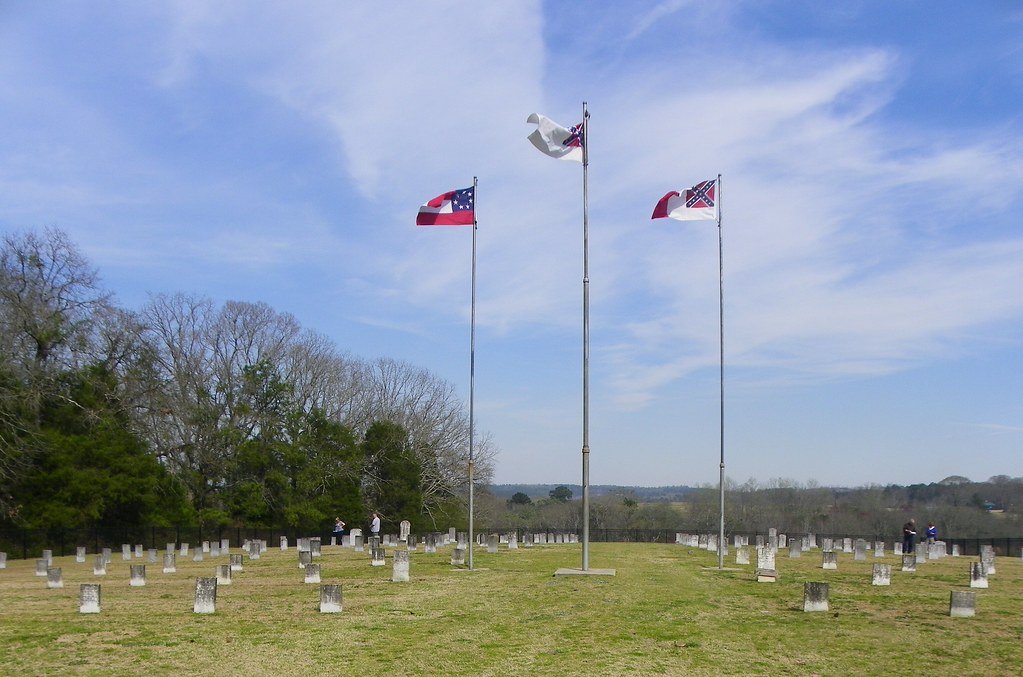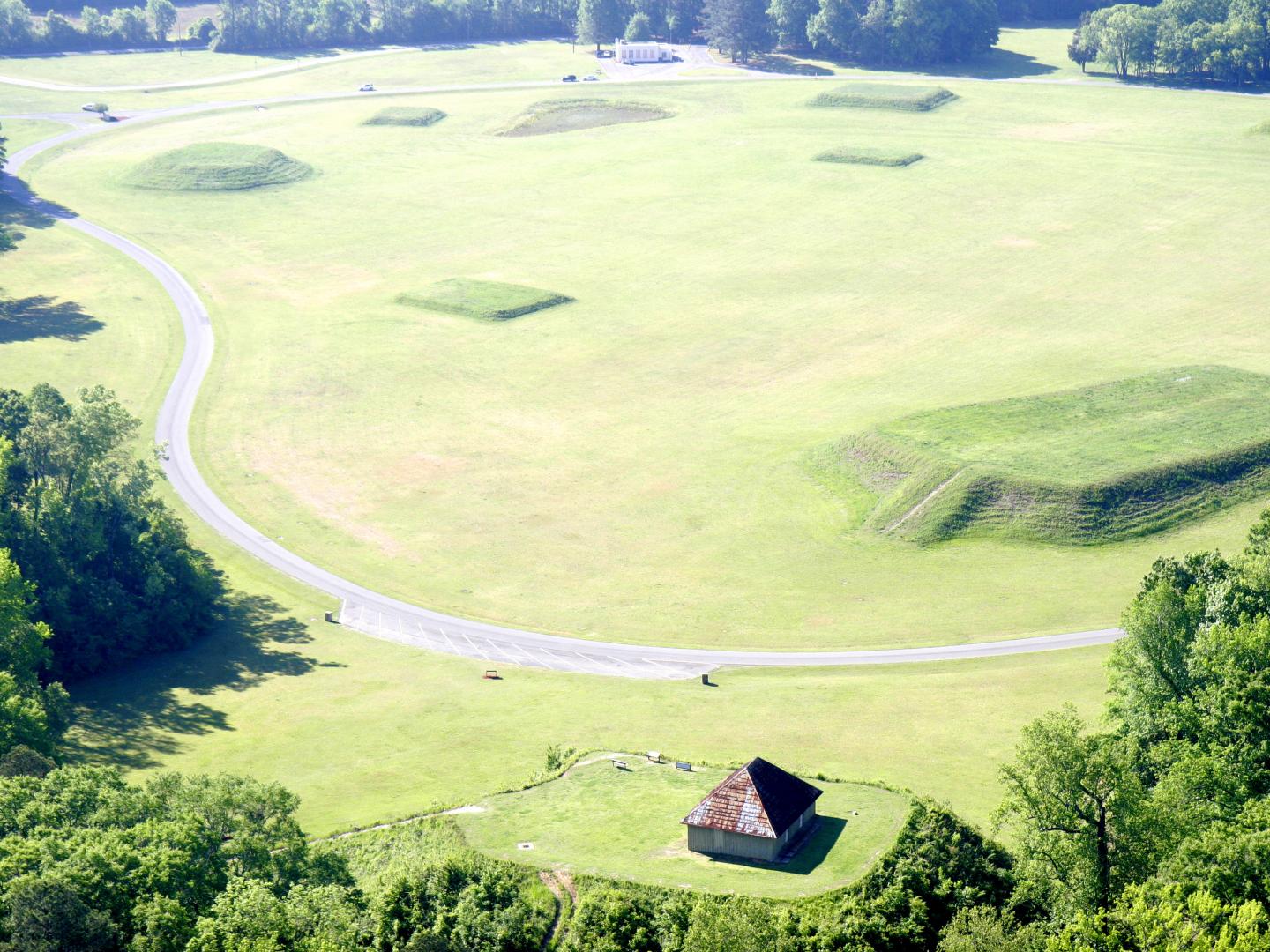Fort Gaines Is One of The Best-Preserved Civil War Structures
Fort Gaines is considered by most experts to be one of the nation’s best preserved Civil War era masonry structures.
It has been nominated for listing as a National Historic Landmark, and it once was used to guard the entrance into Mobile Bay.
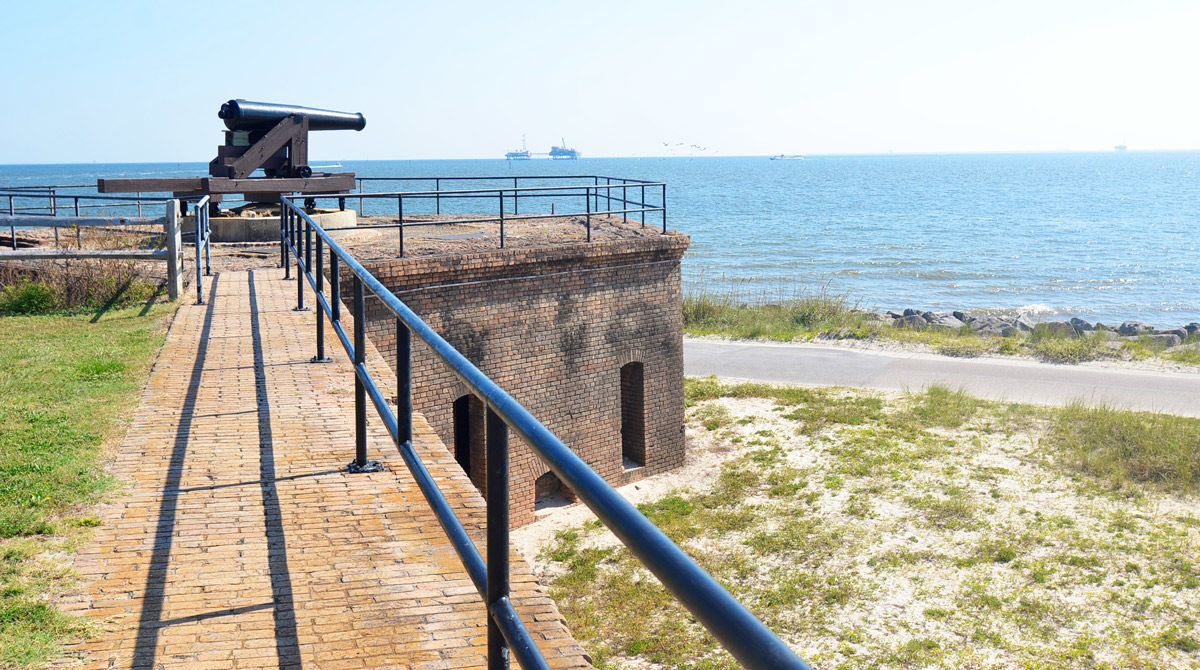 Fort Gaines On Dauphin Island
Fort Gaines On Dauphin IslandIt is located on the eastern tip of Dauphin Island, where it will show the visitor some of the most panoramic views of both Mobile Bay and the Gulf of Mexico.
However, due to constant coastal erosion, it is now considered one of the most endangered historic places in the country.
The History of Fort Gaines
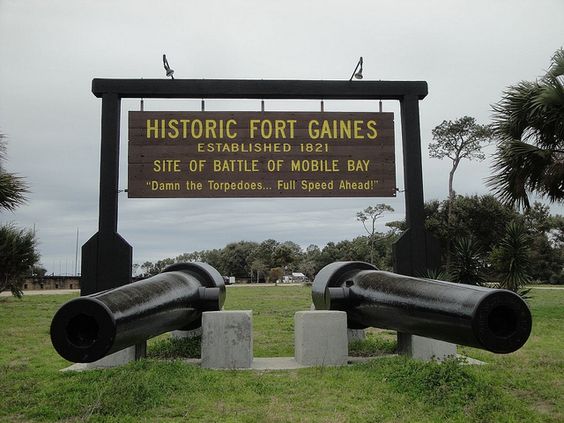 The Sign At Historic Fort Gaines In Alabama
The Sign At Historic Fort Gaines In AlabamaLike its twin, Fort Morgan, Fort Gaines has a very interesting history.
Built as part of the Third System of fortifications in the aftermath of the War of 1812, it sits only three short miles from its sister structure.
It was built to replace similar aging structures but was built in a much more strategic location.
While its sister structure was built to protect the main shipping channels in Mobile Bay, Fort Gaines was built for a much different reason.
Its primary goal was to protect the sheltered anchored ships that were already in Mobile Bay, as well as those friendly ships that would arrive.
It was named after one of the heroes from the War of 1812, General Edmund Pendleton Gaines.
It is made up of five separate building located inside of the exterior walls and has a tunnel system as well as corner bastions.
These corner bastions were built with spiral stone staircases for gun placements, and they are still used today to display cannons.
It was designed in 1818 as an exact copy of its sister fort, but construction was suspended in 1821 by lack of funding.
Funding was not authorized again until 1846, and the actual construction of Fort Gaines did not start until 1857.
Because of this very long delay in time and the changes of the military, the original plans were replaced.
Instead, the Army Chief engineer at the time, Joseph Totten, changed the design to a pentagon shape to better protect Mobile Bay.
However, this change in design would later come back to haunt the occupants of Fort Gaines.
Built to survive a six-month long siege, the outside of the structure had twenty-two-foot-high walls.
It also had a 35-foot-wide dry moat, to provide added protection for the structure and the occupants.
The corner bastions as well as its connecting tunnels made it one of the most modern Army posts in the country at the time.
However, this was not the only advantages it had, as it also had brick gun ramps.
These brick gun ramps were built so ammunition carts could easily reach the gun platforms that were protected by a serpentine wall.
However, despite all these new features, it did not perform very well during the onslaught of the Civil War.
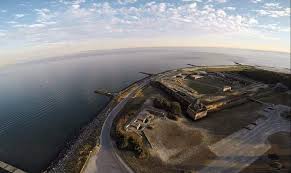 Fort Gaines Historic Site
Fort Gaines Historic SiteFort Gaines and the Civil War
When Alabama made the decision to succeed from the Union, one of the first things they did was to capture and take control of Fort Gaines and its sister fort.
The Alabama state militia seized it on January 5th, 1861.
However, there was one major problem; the construction was still not fully completed.
They hurried to try to finish Fort Gaines, as they knew it was only a matter of time before the Union Army tried to take it back.
The Battle of Mobile Bay, which started in August of 1864, say the Union troops easily defeat Fort Gaines for two different reasons.
The reasons, according to historians, were the actual structure itself, as well as the leadership in charge of the Fort.
Once the battle started, the Confederates soon discovered that they only had one gun that was capable of reaching the channel.
Because of this, they were not able to slow the Union onslaught or inflict any damage on them.
The Union armies begin to shell the structure and the Confederates could not answer them.
The sand dunes that the Union troops were located on, and the low design of the fort gave them another advantage; they could see inside of it.
They were also close enough that when they begin to fire their muskets, it was basically like firing them in a shooting gallery.
With this musket fire and cannon fire the officers’ quarters, which were higher than the fort’s walls, took heavy damage.
Because of these circumstances, the officers presented a petition to their commander, Confederate Colonial Charles Anderson, to surrender.
At first historians say the Anderson refused to surrender, but with the risk of impeding mutiny, he made the decision to surrender.
When the commander of Fort Morgan, General Richard Page, could not get through to Fort Gaines, he rowed a boat over to it to find out why.
When he found out from the second in command Major Charles Johnston, that Colonial Anderson had surrendered, he was furious.
There was nothing he could do however, and on August 8th, he saw the Union Flag flying over Fort Gaines.
Fort Gaines Today
 The Inside of Fort Gaines In Alabama
The Inside of Fort Gaines In AlabamaToday Fort Gaines is under then management of the Dauphin Island Park and Beach Board, and it holds several events each year.
The Battle of Mobile Bay Commemorative Day is held in August, and Christmas at Fort Gaines is held in December.
It also has a small but gorgeous museum that has several Civil War-era documents, and still has eight of the original artillery pieces.
Tour guides dressed in Civil War clothing show visitors how the fort operated and includes the moving of ammunition to the wide brick gun ramps.
The original bakery as well as the blacksmith shop are also fully operational and are used in living history demonstrations on how they were used in that era.
Because of its rich history, Fort Gaines makes an excellent day trip with your family.
References
https://armyhistory.org/a-tale-of-two-forts/

Alabama Gift Store
Numerous Items for You and Your Family to Enjoy
See it here at the Gift Store
Copyright 2019-2023 Alabamabackroads.com
All Rights Reserved
